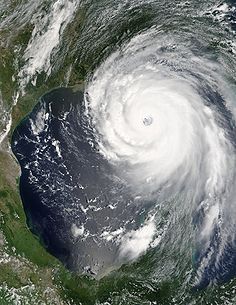Hurricanes, which are also called tropical cyclones or typhoons, are intense, circular low-pressure systems that develop between latitudes 5° and 25° North and South over seas whose surface temperature is higher than about 27°C.
Around a central core of extremely low pressure (the eye of a hurricane) the moist air spins and rises swiftly to form spiraling belts of clouds which, seen from above, resemble a whirlpool. The storm is maintained by the vast amount of energy released by rapid condensation in the rising air.
 Hurricanes drift generally westwards in both hemispheres. When they strike land, the winds, which may reach speeds of 300km/h, can do tremendous damage.
Hurricanes drift generally westwards in both hemispheres. When they strike land, the winds, which may reach speeds of 300km/h, can do tremendous damage.
Hurricanes are readily recognizable on radar screens and satellite photographs, and so it is possible to issue storm warnings.
Over land hurricanes are deprived of their moisture supply, and they gradually die out as air fills the low-pressure storm center.